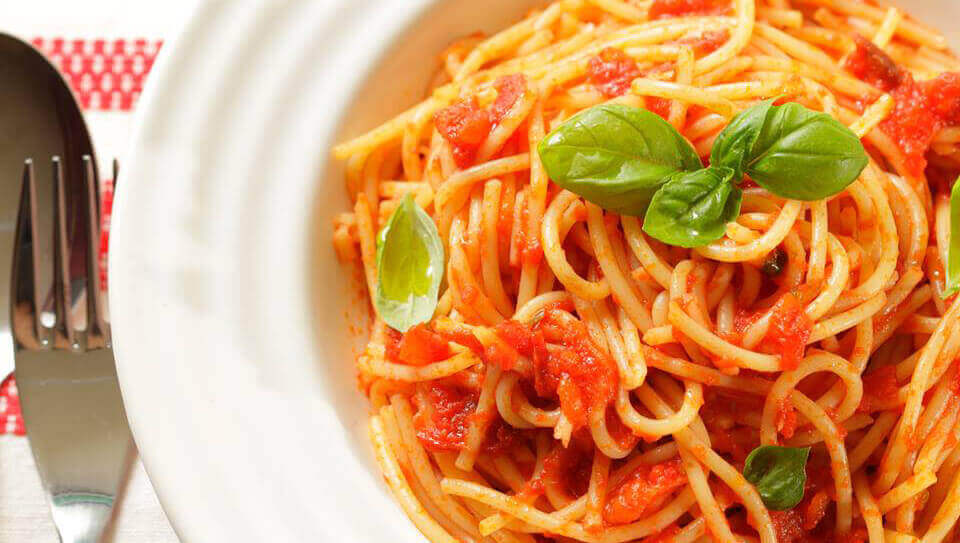It was in the 1960’s when dietary carbohydrates were discovered as the major energy source to fuel exercise by being stored in the muscles as glycogen.
Muscle glycogen content is linked to endurance performance and starting with lower concentrations results in premature fatigue, therefore nutritional strategies to increase muscle and liver glycogen before competition are common to maximise performance.
Endurance athletes like cyclists, swimmers, and runners that perform for more than 90 minutes eat proper endurance foods for energy and stamina.
Here we look at effective carbohydrate loading strategies to get the most from your diet and fuel your next event.
- What is carb loading? / Pre-race fueling
- What’s the purpose of carb loading
- Types of Carb Loading
- How much carbohydrate should you consume?
- What type of carbohydrates?
- Pre-race meal
- Food to eat
- Foods to avoid
- The Most Common Mistakes
- Things to avoid
- Side Effects/ Risk of carb loading
- Results of carb loading
- Practical considerations
- FAQs
What is carb loading? / Pre-race fueling
Carbohydrates are the body’s primary energy source for exercise and are stored as glycogen in the muscles and liver, therefore carbohydrate loading is a strategy to maximize energy stores for optimal performance. So, what are the best carbohydrate recommendations for athletes?
Athletes normally carb load 1-3 days before any intensive endurance athletic events lasting 90 minutes or longer, where large storage of carbohydrates is needed.
Studies show that carbohydrate intakes of 8-12g/kg/body mass in the days before a competition can significantly reduce fatigue and improve endurance performance, for example before a marathon.
What’s the purpose of carb loading
The main purpose of carb-loading is to store energy/ glycogen in your muscles and liver so that you can delay the onset of fatigue and perform at your best in endurance (e.g. running, triathlon) and high-intensity intermittent (e.g. football, rugby) sports.
Types of Carb Loading
The main idea of carb-loading is to increase carbohydrate intake by consuming a combination of easy-to-digest carbohydrate foods, drinks and gels. Together with reduced training volume during the tapering period, this helps to increase glycogen stores. Carb loading can be done from one to six days before any intensive athletic event.
Classic 6-Day
For the first 3 days, athletes will consume a low-carb diet and continue training to deplete their muscle glycogen stores significantly. Then during the last 3 days, have a high-carb diet with no exercise. Studies suggest depletion in the initial phase will help in producing more glycogen.
6-Day
The 6-day carb-loading diet includes gradually increasing the number of carbohydrates and decreasing the volume of training throughout the 6-day schedule.
Your diet must consist of 50% carbohydrate at a minimum which gradually increases by the day. Similarly, the minutes of exercise must not exceed 20 minutes by the end of the 6th day.
Classic 3-Day
It is shorter and easier than the 6 days period for carb loading. This requires that you do intensive endurance exercises for the initial phase that is before the 3 day period then have a high carb diet with no exercise for the rest of 3 days.
Modified 3-Day
It is the same as the classic 3 days except that, instead of exercising for the initial phase, you do not exercise at all. Consume 10 grams of carbohydrate per kilogram of your weight per day.
1-Day
It is the most simple carb loading. No exercise, just consume a high carb diet aiming for 10-12g/kg body mass.
How much carbohydrate should you consume?
Again this will depend on the duration of the event, but training status should also be considered.
For example an elite Tour de France cyclist will consume on average 10-12g carbohydrate per kg body mass per day, but somebody running their first half marathon will not need this much.
So for a 90-minute race, 6-8g per kg body mass of carbohydrates is adequate the day before. For marathons and ultra-endurance events 8-10g·kg·bm is advised.
For example:
A 70kg athlete running a marathon will require at least 560g (8g·kg) of carbohydrates. This is the equivalent of 9 large potatoes, 750g raw pasta or 17 ½ 500ml bottles of Lucozade sport.
Here’s a guide on how to plan your nutrition before a marathon.
What type of carbohydrates?
As you can see it’s a lot of carbohydrates that need to be eaten and eating that much pasta or potatoes is not recommended.
It’s important to eat foods that can be better absorbed by the muscles and will not cause gastrointestinal discomfort. Not all carbohydrates do this.
The glycaemic index (GI) determines the effect a certain food has on blood glucose with high-GI foods being broken down much quicker during digestion than low-GI foods, and are absorbed by the muscles more effectively.
Foods with a high glycaemic load (GL) have a greater quantity of carbohydrates for a given weight of food, and together with GI allow your muscles to efficiently obtain more carbohydrates.
Large intake of fibrous (typically low-GI) foods can lead to gastrointestinal discomfort so it may also be wise to focus on simple, low fibre foods to alleviate digestive issues.
White potatoes are high-GI and GL and removing the skins reduces the fibre content, making mashed potatoes an ideal choice when carb-loading.
Pre-race meal
Typically breakfast, your pre-race meal should prioritise easy to digest carbohydrates with ample protein and plenty of fluids.
This can be personal preference, but a bowl of porridge with honey and banana is a good choice.
Choosing lower-GI foods may actually be better in the hours before a race to help maintain satiety, and research also suggests that it may enhance performance compared to high-GI carbs.
Nutrition timing and quantities, again, are down to the individual, however it would be practical to eat 1-4 hours prior to racing, containing 1-4g·kg carbohydrate (1g·kg·hour).
Food to eat
Having foods that are high in carbohydrates and low fat and fibre is best for carb loading. Include foods that contain protein like fish, dairy, and meat. Eat usual foods that contain high carbs and low fat.
Food Recommendations:
- Low-fiber cereals
- White bread
- White rice
- Sports drinks
- Low-fat Energy bars
- Fruit juices and smoothies
- Fruits (banana, pineapple, and apple)
Foods to avoid
Having foods that are high in carbs and high in fats including high fiber foods. Avoid making your stomach uncomfortable which may deplete performance and carb loading experience.
- Chips
- Cookies
- Pizza
- Ice creams
- Pastries
- Cake
- Donuts
- Creamy sauce
Foods To Limit:
- Beans
- Lentils
- Peas
- Oats
- Broccoli
- Raspberries
- Chickpeas, etc
The Most Common Mistakes
Carb Loading When You Don’t Need To
Carb loading is designed in such a way that it is only beneficial for people who are doing intensive endurance exercise for more than 90 minutes. It may not even be beneficial for athletes having slightly shorter durations of 50 to 90 minutes.
Studies show that carb-loading has shown no benefits of improvement in performance for short-duration activities that last less than 20 minutes.
Carb loading is best for activities that last more than 90 minutes like, football, cycling, and running.
If it is done for low intensive or short-duration exercises or training, it may be counterproductive as you will be consuming more carbohydrates than necessary, resulting in weight gain.
Eating Too Much Fat
Fat can be a part of your balanced diet. However, consuming more fat can be disadvantageous. Since you’re increasing the number of carbs in your body, reducing fat intake could reduce the chances of gaining weight.
While consuming carbohydrates is the main goal, people choose foods that are both high in carbs and fat. Examples of these foods are cakes, chocolates, and ice creams.
Look into foods that contain high carbs but low fats like rice, pasta, breads, energy bars and drinks.
Eating Too Much Fiber
Too much fiber can cause stomach discomfort. Although it is the part of a healthy balanced diet, the amount of fruit and veg should be reduced, and wholegrain options like lentils, beans, brown or wholemeal foods should switched to simple white carbohydrate alternatives like white rice, pasta, bread, mashed potato and cereals.
Eating the Wrong Amount of Carbs
Plan your carbohydrate loading strategy in advance and practice it well to ensure you’re eating sufficient carbohydrates (8-12g/kg) from suitable food and drink sources, that fuel you well and don’t cause any GI issues.
Eating New or Unusual Foods
Practice your carb loading in the weeks before your event, and continue to fine tune this if you’re a competitive athlete. Never try anything new in the day(s) before, or on the day of a race/match!!
Exercising Too Much
Training should be tapered before an event, so training volumes are reduced. With increased carbohydrate intake, this allows you to perform well fuelled and fresh in this combined strategy. If you exercise too much in the days before a race, you will be tired and not able to perform at your best.
Things to avoid
As well as fibre there are other nutrients to limit…not only preventing unwanted digestive discomfort, but also to allow for the increased calorie intake from carbohydrates alone.
Dietary fat is very calorie dense and should be significantly reduced, but protein should also be limited to approx. 1.2g·kg.
Fat and protein can also slow down digestion of carbohydrates therefore excessive intake can have a negative impact.
Other things to avoid include alcohol for obvious reasons, but also spicy food as this can cause major gut problems like bloating and wind which you do not want whilst racing!
Excessive fructose (fruit sugar) may also cause flatulence, bloating and pain and should be monitored closely if you have ever experienced such unexplained issues.
Gluten and lactose containing foods may also be limited/removed from the diet for any individuals with specific intolerances, or if you don’t regularly consume them anyway, it’s better not to introduce them in large quantities just before competition!
Side Effects/ Risk of carb loading
The side effect of carb loading is slight discomfort in the stomach, which can be avoided by avoiding high fiber and high-fat foods, and also too much protein that causes digestive discomfort. Carb loading does not also mean a high-calorie diet, so what you eat and drink needs to be strategically planned, otherwise can result in excessive calorie intake and overall weight gain.
Results of carb loading
The end result of carb loading is that you can store more energy/glycogen into your muscles, which will help you last longer in endurance events.
Studies show, Carb loading reduces the chances of fatigue and improves performance.
However, larger carbohydrate loading strategies are not as demanding for events lasting less than 60 minutes.
Practical considerations
Hydration is fundamental during carb-loading because carbohydrates require water to get into the muscles. Drink plenty of fluids throughout the day especially with meals to aid absorption, but also to boost performance on race day.
It’s also important to note that any athlete should practice any nutritional strategy before applying them for a major competition.
This is the same for carb-loading. Consuming foods that your body is not used to can have a negative effect. If you normally have porridge with skimmed milk before training, why would you choose a bowl of chocolate cereal with full fat milk before a race?
You wouldn’t. Stick to foods you know and have practiced with before in the days/hours before a race to prevent unexpected digestive complications.
Whether you’re used to consuming such high volumes of food or not, getting carbohydrates in liquid form is much easier on the stomach and promotes hydration, whether it’s an electrolyte drink or a smoothie.
FAQs
Who should carb load?
Endurance athletes like cyclists, swimmers, and runners that perform for more than 90 minutes should carb load. Team sport athletes like football, rugby, and hockey who will play 80-90 minute matches also need to increase their carbohydrates, aiming for a slightly lower intake of 6-7g/kg the day before. Athletes competing for less than an hour typically do not need to carb load.
How long to load?
Sufficient muscle glycogen levels can be achieved from 24-48 hours of carbohydrate loading. Events lasting between 90 minutes and 3 hours require just 24 hours of loading, and then anything longer than that should be applied for 48 hours prior






